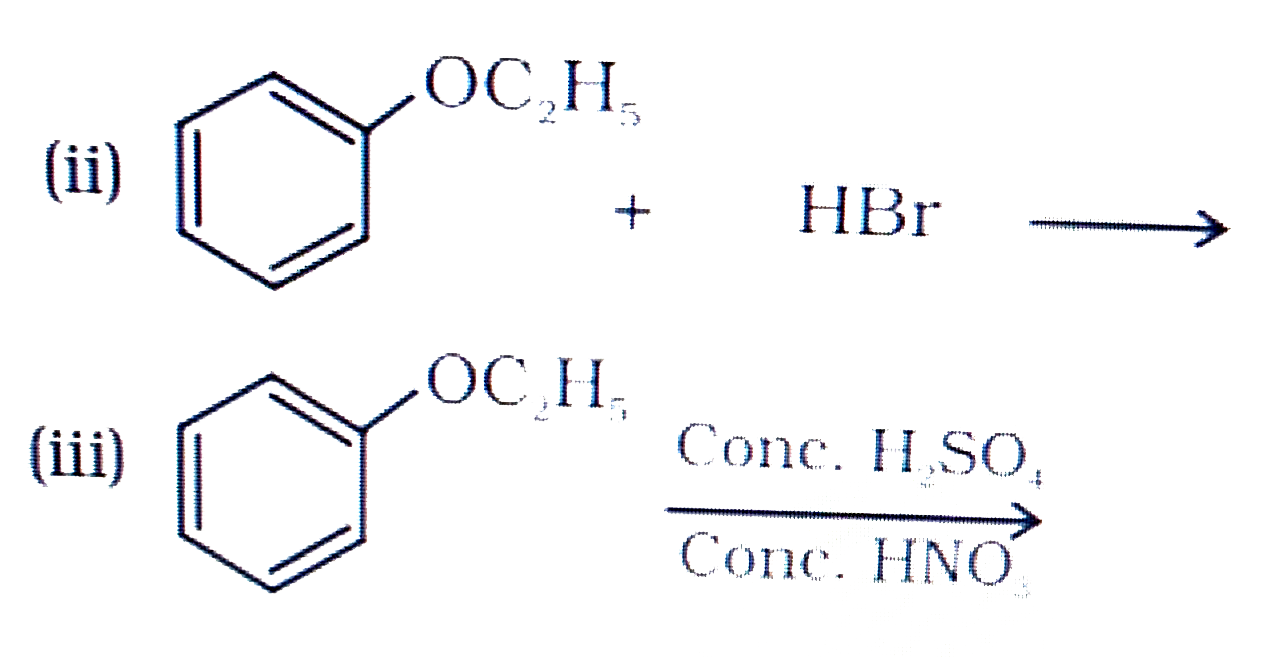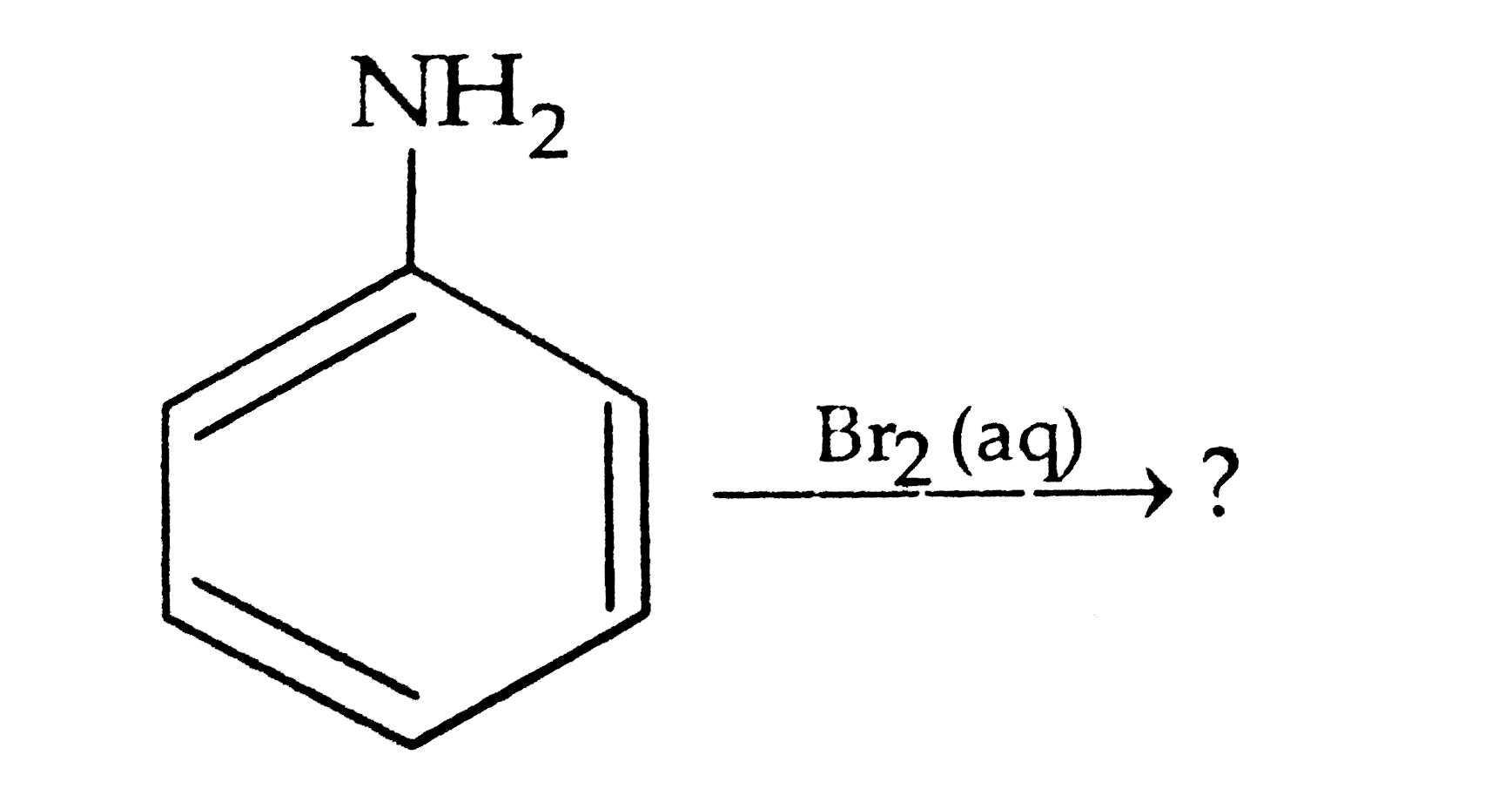Predict the formulae of the products of the following reactions:
C6H5COCH3+NH2OH→
To predict the formulae of the products of the reaction between acetophenone (C₆H₅COCH₃) and hydroxylamine (NH₂OH), we can follow these steps:
Step 1: Identify the Reactants
The reactants in this reaction are:
- Acetophenone: C₆H₅COCH₃
- Hydroxylamine: NH₂OH
Step 2: Understand the Mechanism
Acetophenone contains a carbonyl group (C=O) which is electron-deficient. Hydroxylamine, being a nucleophile, will attack the electrophilic carbon of the carbonyl group.
Step 3: Nucleophilic Attack
The nitrogen atom in hydroxylamine (NH₂OH) attacks the carbon atom of the carbonyl group in acetophenone. This results in the formation of a tetrahedral intermediate. The structure can be represented as:
- C₆H₅C(OH)(NH₂)CH₃
Step 4: Proton Transfer
In the tetrahedral intermediate, a proton transfer occurs. The hydroxyl group (OH) and the amine group (NH₂) rearrange, leading to the formation of an oxime.
Step 5: Elimination of Water
Upon heating, the intermediate undergoes dehydration, where a water molecule (H₂O) is eliminated. This results in the formation of an oxime.
Step 6: Final Product Structure
The final product is an oxime, specifically acetophenone oxime, which can be represented as:
- C₆H₅C=NOH (where C=NOH indicates the presence of the oxime functional group)
Step 7: Write the Molecular Formula
To determine the molecular formula of the product:
- The structure of the oxime contains:
- 8 Carbon atoms (C)
- 9 Hydrogen atoms (H)
- 1 Nitrogen atom (N)
- 1 Oxygen atom (O)
Thus, the molecular formula of the product is:
- C₈H₉NO
Final Answer
The formula of the product of the reaction between acetophenone and hydroxylamine is C₈H₉NO.
---
The reactants in this reaction are:
- Acetophenone: C₆H₅COCH₃
- Hydroxylamine: NH₂OH
Acetophenone contains a carbonyl group (C=O) which is electron-deficient. Hydroxylamine, being a nucleophile, will attack the electrophilic carbon of the carbonyl group.
The nitrogen atom in hydroxylamine (NH₂OH) attacks the carbon atom of the carbonyl group in acetophenone. This results in the formation of a tetrahedral intermediate. The structure can be represented as:
- C₆H₅C(OH)(NH₂)CH₃
In the tetrahedral intermediate, a proton transfer occurs. The hydroxyl group (OH) and the amine group (NH₂) rearrange, leading to the formation of an oxime.
Upon heating, the intermediate undergoes dehydration, where a water molecule (H₂O) is eliminated. This results in the formation of an oxime.
The final product is an oxime, specifically acetophenone oxime, which can be represented as:
- C₆H₅C=NOH (where C=NOH indicates the presence of the oxime functional group)
To determine the molecular formula of the product:
- The structure of the oxime contains:
- 8 Carbon atoms (C)
- 9 Hydrogen atoms (H)
- 1 Nitrogen atom (N)
- 1 Oxygen atom (O)
- C₈H₉NO
The formula of the product of the reaction between acetophenone and hydroxylamine is C₈H₉NO.
Topper's Solved these Questions
- ALDEHYDES, KETONES AND CARBOXYLIC ACIDSBOOK - ICSECHAPTER - ALDEHYDES, KETONES AND CARBOXYLIC ACIDSEXERCISE - ISC EXAMINATION QUESTIONS (PART-I OBJECTIVE QUESTIONS) (FILL IN THE BLANKS)
27 Videos
- ALDEHYDES, KETONES AND CARBOXYLIC ACIDSBOOK - ICSECHAPTER - ALDEHYDES, KETONES AND CARBOXYLIC ACIDSEXERCISE - ISC EXAMINATION QUESTIONS (PART-I OBJECTIVE QUESTIONS) (MULTIPLE CHOICE QUESTION)
24 Videos
- ALDEHYDES, KETONES AND CARBOXYLIC ACIDSBOOK - ICSECHAPTER - ALDEHYDES, KETONES AND CARBOXYLIC ACIDSEXERCISE - EXERCISE (PART-II DESCRIPTIVE QUESTIONS) (VERY SHORT QUESTIONS)
282 Videos
- ALCOHOLS, PHENOLS AND ETHERS BOOK - ICSECHAPTER - ALCOHOLS, PHENOLS AND ETHERS EXERCISE - ISC EXAMINATION QUESTIONS
25 Videos
- APPENDIX II ( TYPICAL CONVERSIONS)BOOK - ICSECHAPTER - APPENDIX II ( TYPICAL CONVERSIONS)EXERCISE - AROMATIC CONVERSIONS
98 Videos
Similar Questions
Predict the formulae of the products of the following reactions: CH(3)COCH(3)+HCN
View SolutionPredict the formulae of the products of the following reactions:
CH3COCH3+HCN→
View SolutionPredict the formulae of the products of the following reactions:
CH3COCH3+HCN→
View SolutionPredict the formulae of the products of the following reactions:
CH3CH2CHO+Cl2→
View SolutionPredict the major product in the following reaction :
C6H5−CH2CO2CH3(i)CH3MgBr(Excess)−−−−−−−−−−−−−−→(ii)H⊕.
View SolutionPredict the products of the following reactions:
(i) CH3−CH2−CH2−O−CH3+HBr→

(iv) (CH3)3C−OC2H5HI−−→
View SolutionPredict the products of the following reactions :
(i) CH3−CH2−CH2−O−CH3+HBr→
(ii)
(iii)
(iv) (CH3)3C−OC2H5+HI→
View SolutionWrite the main products of the following reactions:
(i) C6H5N+2Cl−H3PO2+H2O−−−−−−−−→?
(ii)
(iii) CH3−C∣∣O−NH2Br2+NaOH−−−−−−−→?
View SolutionWrite the main products of the following reactions:
(i) C6H5N+2Cl−H3PO2+H2O−−−−−−−−→?

(iii) CH3−C∣∣O−NH2Br2+NaOH−−−−−−−→?
View SolutionThe products formed in the following reaction
C6H5−O−CH3+HIheat−−→ are
View Solution
